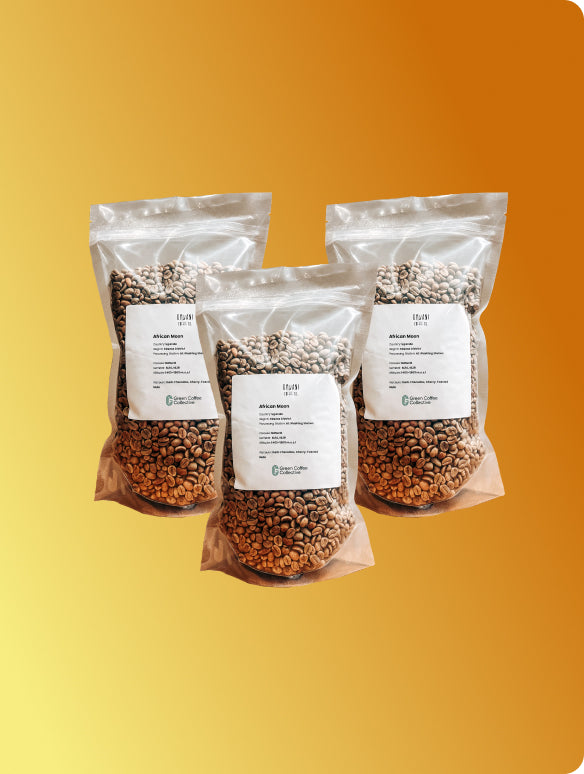Yemen’s crisis in context
Yemen’s war began as a domestic political struggle, but it quickly grew into a regional proxy conflict shaped by shifting alliances and competing interests. When the Houthis took control of Sana’a in 2014 and President Hadi fled, Saudi Arabia and its coalition partners launched air strikes and a naval blockade with US support. Iran’s backing for the Houthis deepened the divide, and the country split into two rival governments with two tax systems, two regulatory structures and almost a decade of stalled peace efforts.
Frontlines settled early, but the humanitarian crisis widened every year. Public services degraded, the currency lost value, and access to food, healthcare and clean water fell sharply. Today more than 18 million people need assistance and millions have been displaced across a landscape where movement, trade and basic services remain unpredictable.
A country that shaped how the world first drank coffee
Ethiopia is the botanical birthplace of the coffee plant, but Yemen is where coffee became a drink. Written records of roasting, brewing and cultivation appear first in 15th-century Yemen, where Sufi communities prepared boiled coffee to stay awake during prayer. Through the port of Mocha, the drink travelled across the Islamic world and into Europe, shaping early coffee culture.
Yemen’s typica-based varieties and centuries-old terrace farming helped define Arabica long before it spread globally. Its influence runs deep.
Coffee as one of Yemen’s most promising rural sectors
Coffee remains one of Yemen’s strongest agricultural opportunities despite its small footprint. Only around 2.4 percent of cultivable land - about 35,000 hectares - is planted with coffee, yet it produced more than 20,000 tonnes in 2019 and accounted for roughly USD 20 million in agricultural export revenue in 2020.
Around 60 percent of Yemen’s coffee is exported each year, heading mainly to Saudi Arabia, the United States and the European Union. Qishr, the dried coffee husk used to make a traditional Yemeni drink, is also exported at scale. Smallholders form the backbone of this sector, working tiny plots that average just 0.3 hectares.
A sector reshaped by conflict and collapsing trade routes
The conflict has disrupted every stage of the value chain. Production peaked in the mid-2000s, recovered slightly between 2012 and 2014, then declined sharply. Export volumes have nearly halved since 2014. Most coffee is grown in the northern highlands, while export routes frequently run through southern ports, forcing traders to navigate checkpoints, overlapping authorities and parallel taxation systems.
Trade routes remain fragile. Many exporters now reroute through Aden, adding significant delays and costs. Recent US strikes further destabilised access to key ports. On the global market, counterfeit “Yemeni-style” coffees continue to dilute the work of genuine smallholders.
Climate pressure and fragile infrastructure
Climate change is tightening its grip on Yemen’s highlands. Farmers are moving higher into the mountains as temperatures rise, but the soils at these elevations are dense, dry and slow to work. Lower-altitude farms now produce cherries that ripen rapidly, reducing sugar development and flattening flavour.
Water scarcity affects even basic processing. In some regions, flotation sorting is impossible because communities cannot spare water. Electricity remains unreliable, mechanisation is expensive to import and most coffee is still picked by hand. Transport infrastructure is limited, and many farmers spend a large share of their income simply getting cherries to a buyer.
Economics, hyperinflation and access to markets
Yemen entered the conflict as one of the poorest countries in the region and the economic situation has worsened every year since. GDP per capita fell by almost half between 2014 and 2018. Even when farmers access specialty buyers, hyperinflation often means that higher prices simply preserve - not improve - their standard of living.
Across the value chain, costs accumulate quickly. Farmers spend close to half their revenue on production. Processors face some of the highest operational costs in the sector. Exporters contend with tariffs, unstable transport routes and heavy administrative demands. Financing is limited; public agricultural funds have stalled and commercial banks treat coffee as too risky.
A value chain held together by private actors
Government support for coffee is fragmented across ministries, with overlapping mandates and limited technical infrastructure. Yemen lacks formal national quality standards, functioning testing labs or modern research centres for varietal development. As a result, cooperatives, exporters and SCA Yemen have taken on roles that would normally sit within public institutions, providing training, quality verification and basic organisational support.
Investment over the last decade has focused on emergency aid rather than long-term development, leaving gaps in processing capacity, infrastructure and market access.
Coffee’s potential and its limits
Coffee is not a solution to Yemen’s wider crisis, but it remains one of the few agricultural sectors with strong export potential and deep cultural continuity. With investment in roads, processing hubs, irrigation systems, agronomy training and market regulation, the sector could support rural livelihoods on a much broader scale.
Specialty-focused cooperatives have shown what is possible when farmers gain access to training, stable buyers and functioning infrastructure. Yet these successes remain small pockets within a much larger system shaped by conflict, climate pressure and economic strain.
Yemen’s coffee heritage is extraordinary. Its farmers continue to work steep terraces shaped by centuries of cultivation, even under some of the most challenging conditions in the world. The sector’s future is tied to broader political and economic change, and for now, producers are operating within the limits imposed by the crisis.

